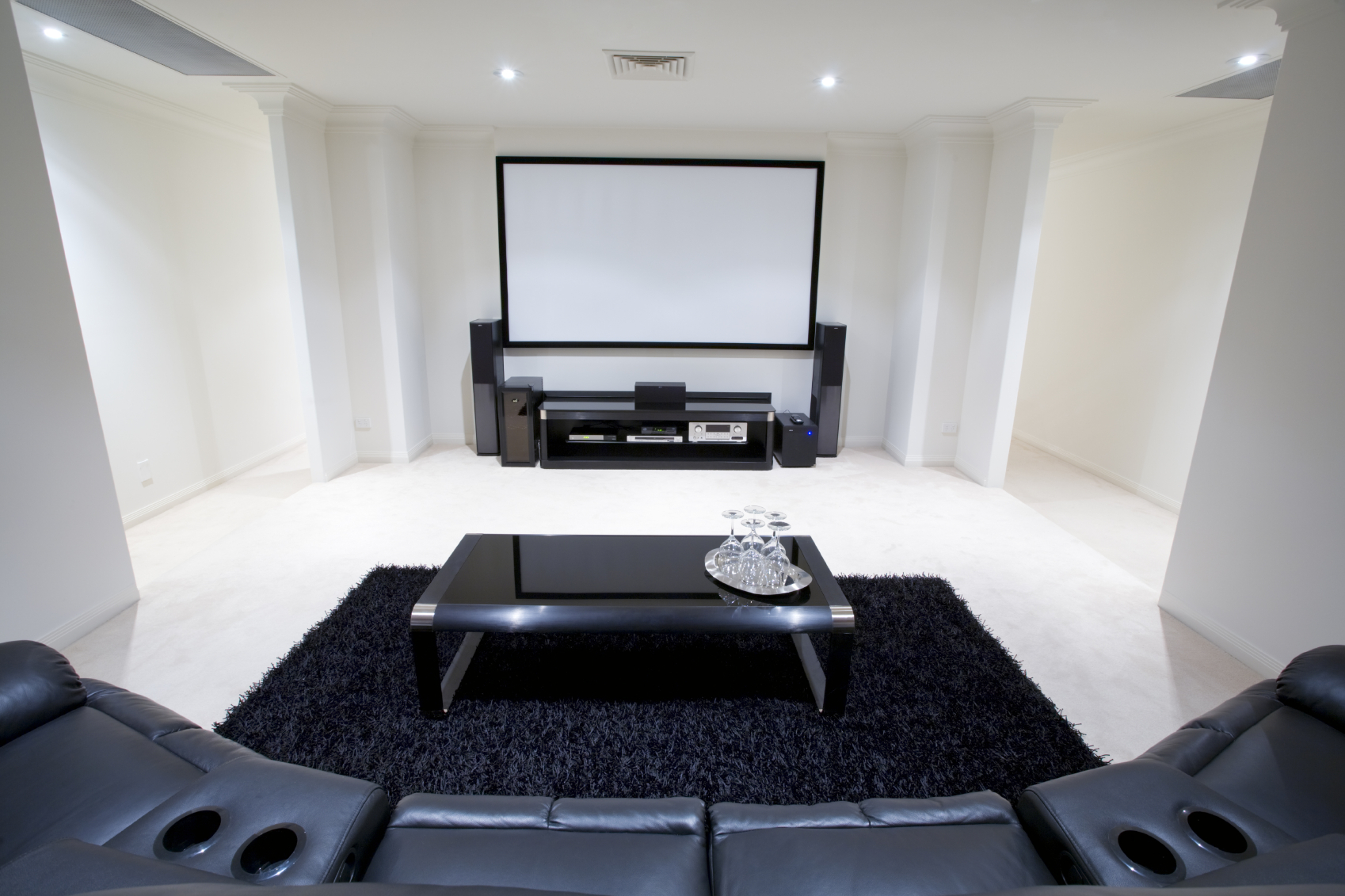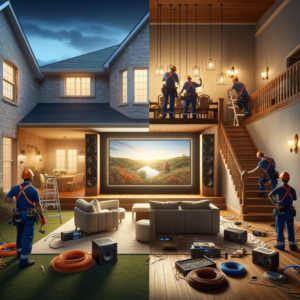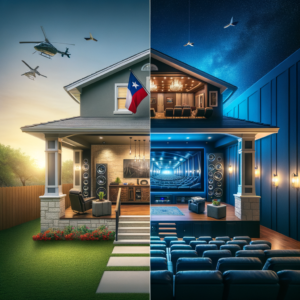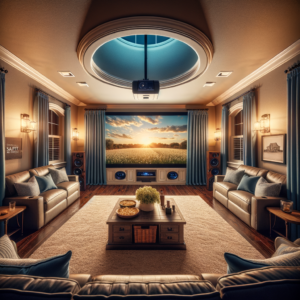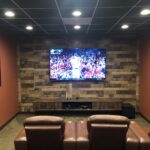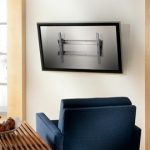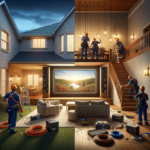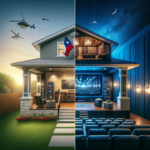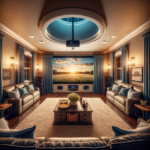Wouldn’t you love for friends and family to label your residence as the “place to be?” That’s about to happen with the smart addition of an exciting home theater to enjoy on a whim. No more checking movie times or dealing with obnoxious movie goers, enjoy privacy and solitude in the comfort of your own home with your own custom setup designed by you. Watching your favorite movies on the big screen is no longer a pleasure reserved for those packing heavy wallets nor does it include the need to hire overpriced designers and contractors to do the work for you. Home theaters are increasingly becoming a luxury that is tangible enough for anyone with the right tools and knowledge to enjoy. As the best in Houston Home Theater design, we will help guide you through the main aspects of building the spectacular home cinema of your dreams. There are a few important elements that will greatly effect the end result and we will provide you with the keys to making certain you get the best possible outcome.
Location. When building a home theater the location is one of the most pivotal points in creating the a favorable theater atmosphere. The ideal space to house a home theater is 20 ft. long by 13 ft. wide and the goal is to make sure it is secluded from the rest of the home as not to disrupt other daily activities within the home. In the same token, you want the theater to translate as non-restrictive and a place where guests can feel free to let loose and enjoy themselves. Some ideas that work well as home theater spaces include building a theater wing off the family room, enclosing an open second story space with a theater or transforming a square bedroom that is at least 12 x 12 feet.
Framing and Insulation. Even though framing your home theater room is not much different than framing any other room in the home, there is a emphasis on the insulation that is necessary for the proper sound barrier. Keep in mind that a rating of R30 is the standard for floors, exterior walls and ceilings but the interior walls shouldn’t be forgotten. In order to prevent the sound from traveling and shaking the walls, loosely packed R11 can be installed to form an additional barrier. For more complete sound security, it is also advised to install other sound barriers after pre-wiring.
Pre-wire Surround Sound. A 7.1 surround system is the preferred type of sound that most home theaters use. This setup includes left, right, center, two side surrounds and two rear surrounds. Mark the location where you will be installing each speaker.
-
Center- Just above the screen
-
Left/Right-On either side that is about ear-level height
-
Side Surround-On the side walls just behind the main row of seating
-
Rear Surrounds-On the back wall (depending on the space between the system)
Choose a spot that for a hub where you will be storing the receiver and A/V equipment, such as hidden within a cabinet or closet. Run audio cables from the hub to the speaker location. Make sure cables are 16-4 (16 gauge, 4 conductors) for the side and rear speakers. Stronger cables like a 12 or 14 gauge cable can be used for left, right and center speakers.
Pre-wire a Projector. To create the life-like theater experience you have in mind, you’ll need to pre-wire a projector. You can do this by simply using two different cables, an HDMI cable to transmit high definition to the projector and a CAT5 control wire for accessing the projector via RF remote.
One of the cables should extend from the ceiling near the projector location and the other end should plug into the equipment hub. Make sure that you pre-wire your hub with your cable or satellite feed as well as with your internet connection so you can access high-speed, streaming videos.
Pre-wire Lighting. Your lighting scheme is essential to the ambiance of your home theater and should be carefully assessed. Make sure you include both lighting scones on the side walls and recessed lighting into the ceiling. Install basic electrical lighting in both locations. It would also be convenient to have the lighting connected to an RF dimmer so you can use a wireless remote to dim the lights or adjust them to dim on auto-play once the movie starts. If your home theater uses stadium style seating, you will also need to run low-voltage lighting strip along the floor.
Drywall and Sound Barriers. When installing your drywall, its important to create incisions for all of your electrical and audio wiring to be routed. There are two options you will want to consider for creating a sound barrier.
-
Specialty drywall- A brand such as QuietRock Soundproof Drywall will be highly effective but will cost you a dramatic difference in cost, sometimes up to eight times as the standard drywall.
-
Typical drywall-Apply using sound dampening materials like high intensity vinyl.
As a final sound-reducing measure, make sure to use a solid-core door.
Video and Sound Systems. After drywall is finished and painted you are finally ready to hang your projector, speakers and big screen. When choosing your screen make sure you pick an ideal size, which is usually around110-120 inches. For a more clean and sophisticated look, frame the screen with proscenium. This uses black acoustic panels that will conceal the left, right and center speakers. The rest of the speakers can be artfully hidden under other acoustic panels that can also serve as part of the décor and can be custom designed with movie posters, artwork, ect. The speakers and projector will connect to the equipment in the hub and the receiver can connect to various media outlets such as a Blu Ray player, cable/satellite feed, game console or home theater PC.
Theater Seating. The seating in a home theater can vary depending on your preference, there is the idea of opting for comfy furnishings such as sofas and loveseats or you can go with the authentic approach and use real theater-style seating. This would require about two rows of four seats which will easily fit in a 20 by 13 sized room. You can also choose to elevate the back row with a raised platform for enhanced viewing. Enjoy the range of options that include leather seating with cup holders and other functionable styles to suit your needs.
If you enjoy having all the pleasures of watching a movie on the big screen but wish you could have it right in your very home, than you are only a few steps away from making your vision a reality. A custom movie theater is right within your reach but we are here to help if you are in need of further expertise. We have seasoned professionals in the Houston, TX area that are waiting at your service. Our professionals will help walk you through every aspect of building and constructing your own home theater. Call us today and give your home the dose of entertainment it needs!


